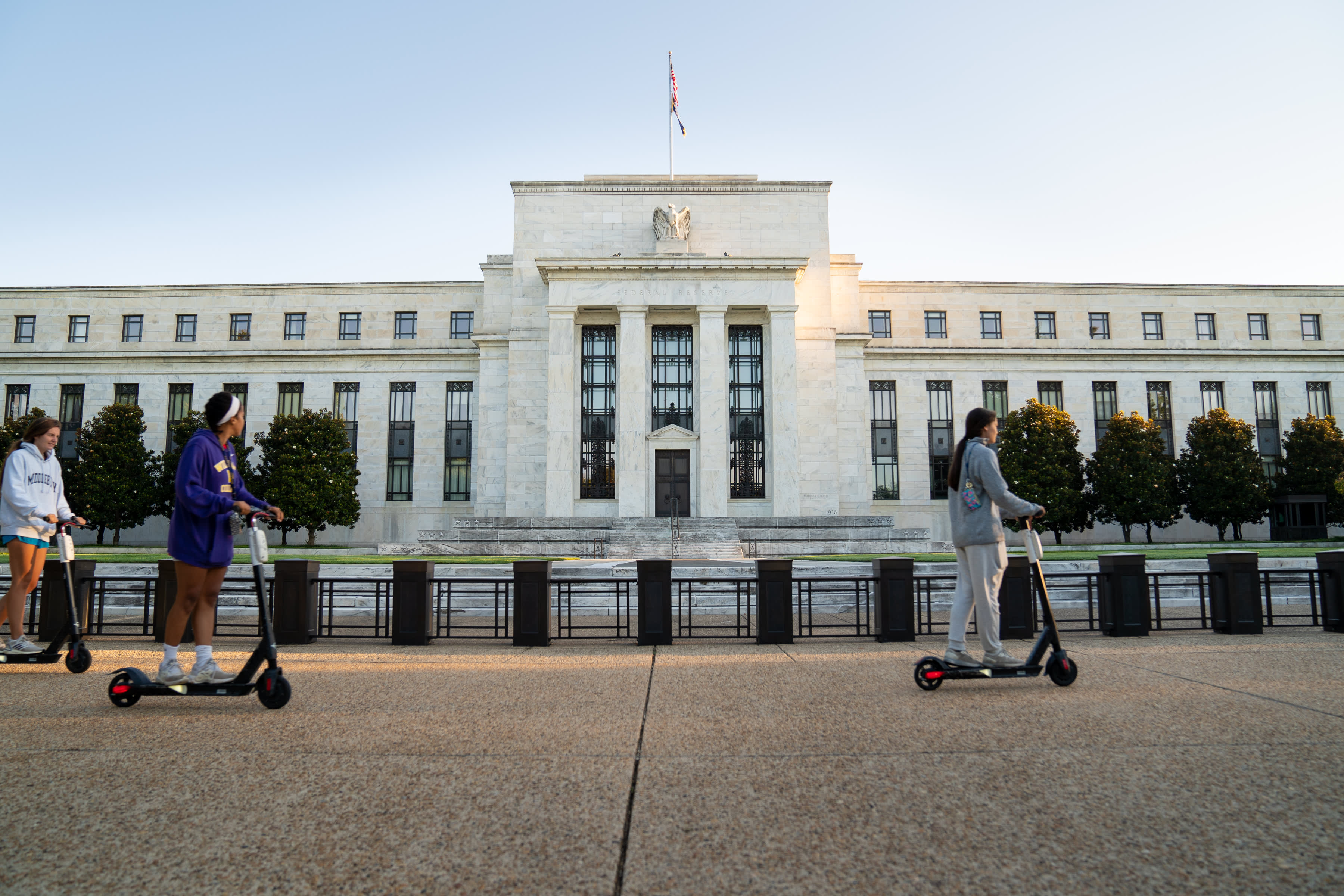People ride scooters past the Marriner S. Eccles Federal Reserve building in Washington, D.C., U.S., on Tuesday, Aug. 18, 2020.
Erin Scott | Bloomberg | Getty Images
The Federal Reserve said Thursday it would keep its benchmark interest rate near zero for as long as it takes to help the economy bounce back from the coronavirus crisis.
In addition to holding rates near rock bottom, Chairman Jerome Powell indicated the central bank remains committed to providing financial help for everyday Americans, regardless of the outcome of the election.
With millions of people out of work and a growing number of Americans feeling severely cash-strapped, the Fed’s historically low borrowing rates makes it easier to borrow money — while also making it less desirable to hoard cash.
“By driving rates down to near zero and providing liquidity for lending, the Fed has used just about every monetary policy tool available to fight the current recession,” said Richard Barrington, a senior financial analyst at MoneyRates.
The Fed has used just about every monetary policy tool available to fight the current recession.
Richard Barrington
senior financial analyst at MoneyRates
Although the federal funds rate, which is what banks charge one another for short-term borrowing, is not the rate that consumers pay, the Fed’s moves still affect the borrowing and saving rates they see every day.
Here’s a breakdown of how it works:
For starters, most credit cards come with a variable rate, which means there’s a direct connection to the Fed’s benchmark rate.
Even college students are paying less on their college debt.
Based on an earlier auction of 10-year Treasury notes, the interest rates on federal student loans taken out during the 2020-21 academic year are at an all-time low.
For those already struggling with outstanding debt, the CARES Act offered even more relief by pausing payments on federal student loans until the end of the year.
Longer-term loans are not directly correlated, but the Fed still has some impact over these rates, as well.
Currently, the average 30-year fixed-rate home mortgage is 3.04%, just off a record low, according to Bankrate. The economy, the Fed and inflation all have some influence over long-term fixed mortgage rates, which generally are pegged to yields on U.S. Treasury notes.
“The Fed is driving mortgage rates lower,” said Tendayi Kapfidze, chief economist at LendingTree, an online loan marketplace. “This has supported the housing market.”
Homeowners can continue to take advantage of such low rates by refinancing, McBride said. “It’s still something that can result in a tangible benefit,” he said. “Households can save $200 to $300 a month or more.”
On the flipside, historically low rates offer almost nothing for savers.
The average savings account rate is a mere 0.05%, or even less, at some of the largest retail banks, according to the Federal Deposit Insurance Corp. Although the Fed has no direct influence on deposit rates, those tend to be correlated to changes in the target federal funds rate.
However, “if consumers have been seeing their deposit accounts earn less and less as a result, they don’t have to sit back and accept it,” Barrington said.
There is a lot to be gained by shopping for better rates on savings accounts, money market accounts and CDs, he advised.
Thanks, in part, to lower overhead expenses, the average online savings account rate could be 12 times higher than the average rate from a traditional, brick-and-mortar bank, Barrington said.
“With more and more people doing business from home due to pandemic restrictions, this may be an ideal time to change how you bank — and earn more as a result.”
